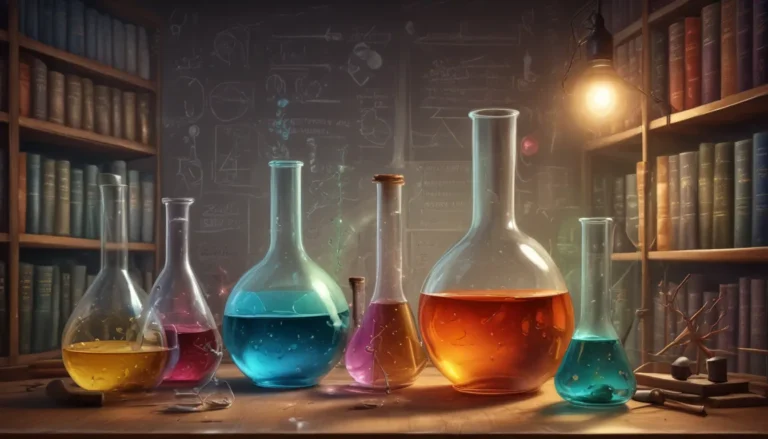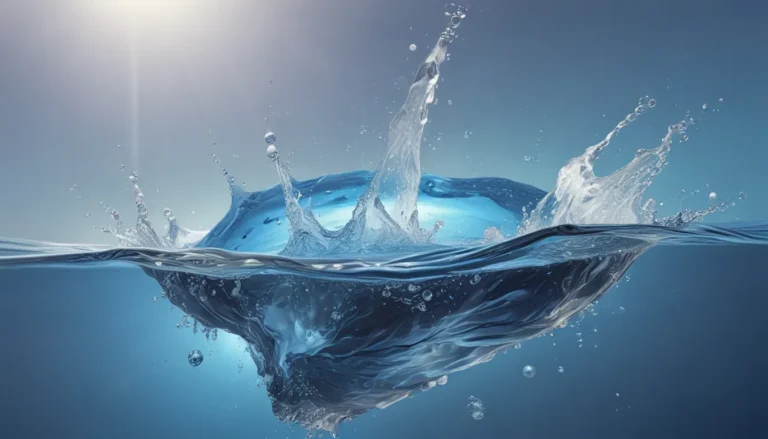A Note About Images: The images used in our articles are for illustration purposes only and may not exactly match the content. They are meant to engage readers, but the text should be relied upon for accurate information.
Are you ready to embark on a journey into the captivating world of precipitation? Brace yourself for an exploration of 11 unbelievable facts that will leave you in awe. From the mesmerizing colors of precipitates to their pivotal role in environmental processes, each fact promises to unravel the intricate nature of this chemical phenomenon. So, fasten your seatbelts as we delve deep into the realm of precipitation.
Unraveling the Fascinating World of Precipitation
Precipitation refers to the formation of solid particles, known as precipitates, from a liquid solution during a chemical reaction. While it may seem like a simple process, precipitation holds a treasure trove of intriguing facts and phenomena waiting to be discovered and explored.
The Diversity of Precipitate Morphology
One of the most remarkable aspects of precipitation is the diverse range of forms it can take. From fine powders to crystalline structures and even amorphous solids, precipitates exhibit an array of shapes and sizes that add to the complexity and intrigue of this chemical process.
The Crucial Role of Precipitate in Analytical Chemistry
In the realm of analytical chemistry, precipitate plays a vital role in identifying the presence and concentration of specific substances. By inducing the formation of precipitate through the addition of specific reagents, scientists can analyze, filter, dry, and weigh the resulting solid to determine the quantity of the desired compound with precision.
The Vibrant Colors of Precipitates
While white or off-white precipitates are common, some precipitates showcase unique and vibrant colors. Whether blue, green, red, or multi-colored, the hues of precipitates can vary due to the presence of specific metal ions or complex compounds, adding a splash of beauty to this chemical process.
Reversible vs. Permanent Precipitates
Not all precipitates are permanent – some can dissolve back into the solution under certain conditions. Known as temporary precipitates, these reversible solids offer insights into the solubility and stability of different compounds, highlighting the dynamic nature of precipitation.
Influential Factors in Precipitate Formation
Temperature, concentration, pH, and reaction kinetics are among the factors that influence the formation of precipitate. These variables play a significant role in determining the rate of formation, size, and characteristics of the resulting solid particles, shaping the outcome of chemical reactions.
The Visual Indicator of Chemical Reactions
The formation of precipitate serves as a visual indicator of chemical reactions in progress. By witnessing the transformation between reactants and the emergence of solid precipitates, chemists can identify and confirm specific reactions, providing tangible evidence of chemical interactions.
Industrial Applications of Precipitate
Beyond scientific research, precipitate plays a pivotal role in various industrial processes. From wastewater treatment to pigment production and pharmaceutical manufacturing, precipitates contribute to removing pollutants, producing essential materials, and supporting advancements in diverse industries.
Beyond Liquids: Atmospheric Precipitates
Precipitates are not limited to liquid environments – they can also form in the air, giving rise to atmospheric particulate matter. These airborne solids, originating from the reaction of gases or aerosols, have a significant impact on air quality and human health, underscoring the broader implications of precipitation.
The Scientific Insights Offered by Precipitate
Studying precipitate offers valuable insights into the fundamental principles of chemistry and the behavior of different substances. By observing and analyzing the formation of solid particles, scientists can deepen their understanding of compound properties, reactions, and interactions, illuminating the intricacies of chemistry.
Encounters with Precipitates in Everyday Life
While often explored in scientific settings, precipitates can also be encountered in daily life. Whether in the form of scale in kettles or sediments settling in beverages, these examples of precipitate formation serve as reminders of the pervasive presence of chemical processes in routine activities, inviting curiosity and exploration.
In Conclusion: The Marvels of Precipitation
The captivating world of precipitation unveils a realm filled with astonishing facts and insights. From the stunning patterns of solid particles to their significant roles in various processes, precipitates showcase the intricate nature of chemistry. By appreciating the colors, impacts, and applications of precipitates, we gain a greater understanding of their place in the molecular world, paving the way for advancements in diverse fields.
FAQs: Unveiling More Secrets of Precipitation
Q: What is a precipitate?
A: A precipitate is a solid substance that forms during a chemical reaction when two liquids or solutions combine, appearing as suspended solid particles or settling at the bottom of a solution.
Q: How do precipitates form?
A: Precipitates form when two solutions containing soluble compounds undergo a reaction that yields an insoluble product, leading to the separation of the solid precipitate from the solution.
Q: Can precipitates have different colors?
A: Yes, precipitates can exhibit a range of colors depending on the chemical compounds involved in the reaction. Vibrant hues may result from transition metals, while some precipitates may remain colorless or white.
Q: What are real-life examples of precipitates?
A: Real-life instances of precipitates include the formation of rust on iron surfaces, sediment settling in natural bodies of water, and the crystalline structures of snowflakes, all showcasing the tangible effects of precipitation in everyday scenarios.
Q: How do precipitates impact environmental processes?
A: Precipitates play a pivotal role in environmental processes by aiding in the removal of pollutants from water sources through mechanisms like coagulation and flocculation. Additionally, atmospheric precipitation reactions contribute to rainfall and snowfall patterns, affecting ecological systems.
Dive deeper into the wonders of precipitation with the enigmatic realm of orographic rainfall and the intriguing insights offered by precipitation titration. Embark on a journey of discovery and uncover the hidden marvels of this captivating chemical phenomenon.
Survey: Your Feedback Matters!
At the core of our mission lies a commitment to delivering accurate, engaging, and reliable content. Each fact shared on our platform is contributed by users like you, ensuring a diverse range of insights and information. Our dedicated editors meticulously review each submission to uphold the highest standards of accuracy and authenticity. Trust in our dedication to quality as you explore, learn, and unravel the mysteries of the world with us.






